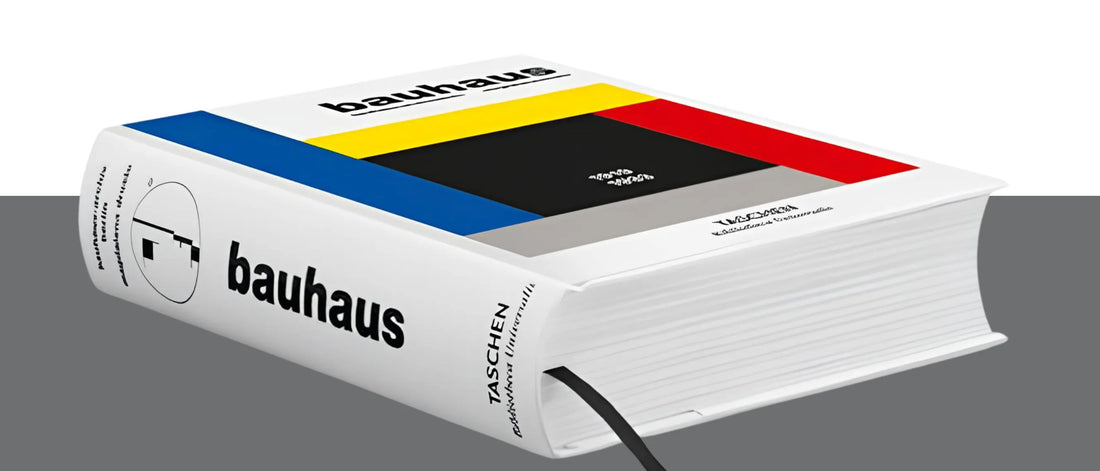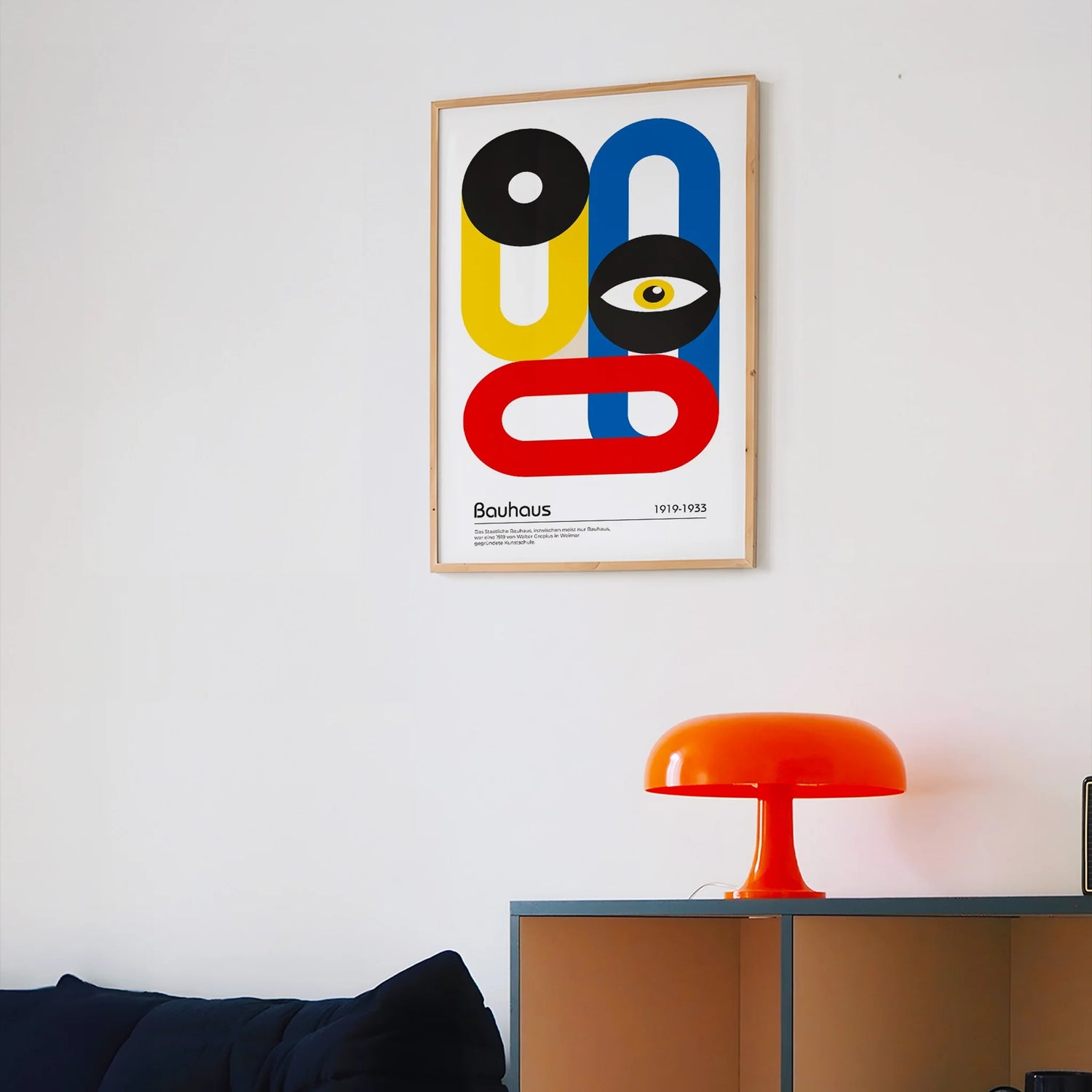
Bauhaus History and Foundations
The Bauhaus, founded in 1919 by architect Walter Gropius in Weimar, Germany, is much more than just a school of art and design. It represents a watershed moment in the history of architecture and applied arts. By merging art, craftsmanship, and technology, the Bauhaus sought to reinvent the visual world to meet the needs of a modern, industrial society. This avant-garde vision not only disrupted the artistic conventions of the time, but also laid the foundations for contemporary architecture and design.
In a Germany marked by the social and economic upheavals of the post-war period, the Bauhaus was born out of the need to rethink production methods and create functional and aesthetic objects accessible to all. From its beginnings in Weimar, through its flourishing period in Dessau, to its closure under pressure from the Nazi regime in Berlin, the history of the Bauhaus is a saga of creativity, challenge and innovation.
This article explores the origins and evolution of the Bauhaus, highlighting its core principles, iconic figures, and enduring legacy. By tracing the journey of this revolutionary institution, we will discover how the Bauhaus transformed our perception of art and design, and why, a century later, its influence remains omnipresent in our everyday environment.
Historical Context
At the end of the First World War, Germany was in the throes of major political and social upheaval. The defeat in the war and the fall of the German Empire gave rise to the Weimar Republic, a period of great instability but also of cultural and artistic renewal. It was in this context that the Bauhaus was born, with the ambition of responding to the challenges of a society in reconstruction.
The Arts and Crafts movement, as well as Jugendstil (Art Nouveau in Germany), also played a crucial role in the emergence of the Bauhaus. These movements advocated a return to craftsmanship and quality in the production of everyday objects, in opposition to the mass industrialization that characterized the early 20th century.
The Founding of the Bauhaus (1919)
Walter Gropius, architect and visionary, founded the Bauhaus in 1919 in Weimar. His goal was to create a school that would unify art and craft to produce total works of art (Gesamtkunstwerk). Gropius wanted to overcome traditional distinctions between different artistic and craft disciplines, promoting a holistic and interdisciplinary approach.
The Bauhaus Manifesto, published the same year, established the founding principles of the school: collaboration between artists, craftsmen and architects to create functional and aesthetic works, and the integration of art into all aspects of daily life.
The Weimar Years (1919-1925)
The early years in Weimar were marked by experimentation and innovation. The Bauhaus attracted renowned teachers such as Paul Klee, Wassily Kandinsky and Lyonel Feininger. These artists brought a diversity of perspectives and techniques, enriching the school's pedagogical approach.
Bauhaus students were encouraged to explore different disciplines and participate in practical workshops. Early Bauhaus productions, such as furniture and textiles, reflect this multidisciplinary and experimental approach.
However, tensions with local authorities and conservative critics increased. The Bauhaus's progressive ideas and unconventional methods were often misunderstood and contested.
The Dessau Period (1925-1932)
In 1925, due to political pressure in Weimar, the Bauhaus moved to Dessau. This move marked the beginning of a period of great prosperity for the school. The new Bauhaus building, designed by Gropius, became a symbol of modern architecture with its functional and refined design.
In Dessau, the Bauhaus increasingly focused on architecture and industrial design. Iconic projects such as the Director's House and the Masters' Houses were realized, embodying the Bauhaus principles of functionality and modernity.
László Moholy-Nagy, director of the metal and theatre workshops, introduces innovative ideas in industrial design and media. The production of furniture, lighting and utility objects reaches new heights of quality and innovation.
The Last Years in Berlin (1932-1933)
In 1932, under increasing pressure from conservative political forces, the Bauhaus was forced to leave Dessau and relocate to Berlin. This period was marked by considerable financial and political challenges. Despite the hostile environment, the members of the Bauhaus continued to work and teach, but the closure of the school became inevitable.
In 1933, the Bauhaus closed its doors for good under pressure from the Nazi regime, which considered its ideas and practices subversive. However, the dispersal of Bauhaus members throughout the world allowed its ideas to continue to spread and influence global design and architecture.
The Teachings and Legacy of the Bauhaus
Despite its premature closure, the Bauhaus' influence endures. The principles of functionality, simplicity, and interdisciplinarity continue to guide contemporary artistic and architectural practices. Former Bauhaus members, such as Ludwig Mies van der Rohe and Marcel Breuer, emigrated to the United States, where they helped spread Bauhaus ideas through iconic projects and educational programs.
The impact of the Bauhaus is also seen in industrial design, where the emphasis on high-quality mass production and the integration of aesthetics into everyday objects became norms.
Conclusion
The story of the Bauhaus is one of a bold quest to reinvent the arts and crafts in a changing world. From its tumultuous beginnings in Weimar to its heyday in Dessau and its difficult final years in Berlin, the Bauhaus left an indelible mark on architecture, design, and the applied arts. Its legacy, founded on the fusion of art and craft, functionality and innovation, continues to inspire and transform our visual environment a century after its founding.
Bibliography and Sources
- Droste, Magdalena. Bauhaus 1919-1933 . Taschen, 2002.
- Gropius, Walter. The New Architecture and the Bauhaus . MIT Press, 1965.
- Whitford, Frank. Bauhaus . Thames & Hudson, 1984.
- Wick, Rainer K. Teaching at the Bauhaus . Hatje Cantz, 2000.




